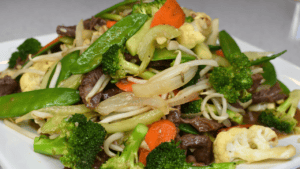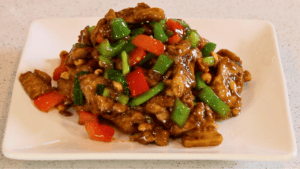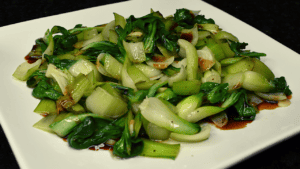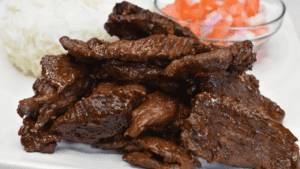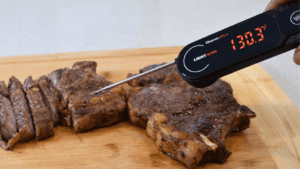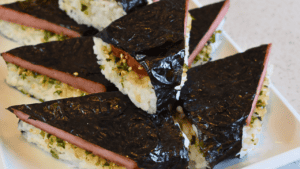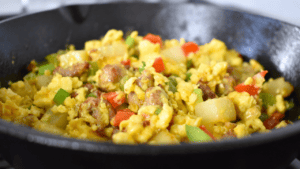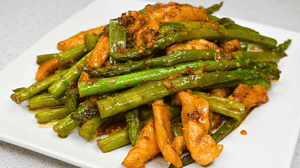French Omelette
French omelette, also known as classic omelette or Omelette Française, is a type of egg dish that originated in France. It is made by beating eggs and cooking them quickly in a hot pan with butter or oil, resulting in a fluffy and smooth texture.
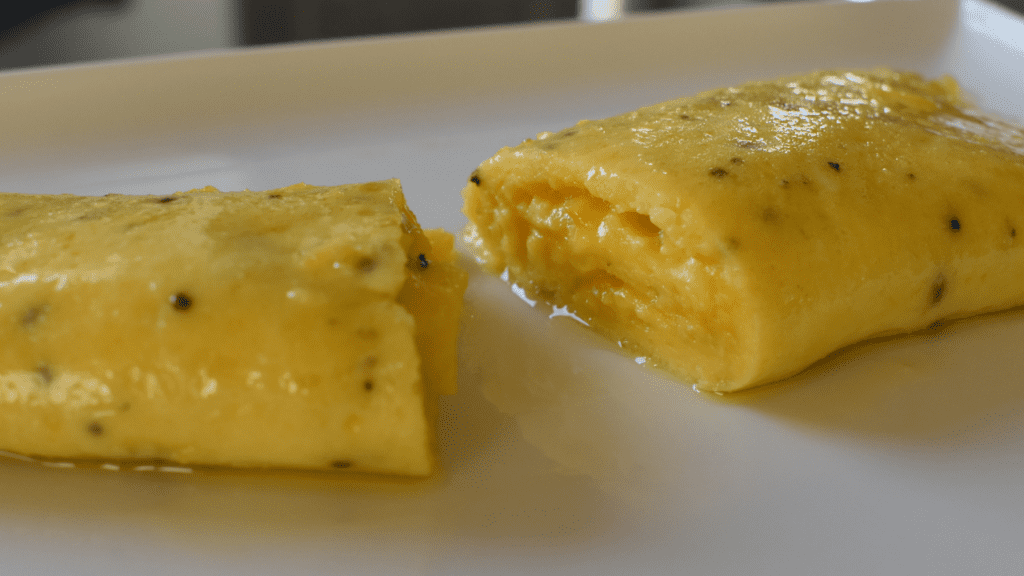
How to Cook a French Omelette: A Beginner’s Guide
The elegance of French cuisine is often in its simplicity — taking a few basic ingredients and transforming them into a dish that is a delight to the senses. The French omelette, lauded for its subtly delightful flavors and velvety texture, is a reflection of this culinary philosophy. If you’re looking to elevate your breakfast or brunch game, there’s nothing quite like mastering the French omelette.
This thorough guide is designed for those who are stepping into the world of cooking or those aiming to perfect this classic dish. We’ll start with the basics, from the pan to the final presentation, ensuring that your experience crafting a French omelette is as smooth as its silky final texture.
Step 1: Gather Ingredients
Before you begin to cook, it’s essential to have all the required ingredients at hand. A French omelette doesn’t demand a long list of items; instead, precision in preparation and technique is key.
Here’s what you’ll need:
- 3 large eggs
- 1 tablespoon of butter
- ½ teaspoon of salt
- ½ teaspoon of ground black pepper
Ensure your eggs are fresh, as they will provide the best taste and texture. Let your butter come to room temperature to aid in the even cooking of the omelette.
Step 2: Prepare the Eggs
In a bowl, crack three eggs and whisk them briskly. The more you whisk, the lighter and fluffier they become. Season your eggs with salt and pepper for flavor.
Pro Tip:
Use a whisk or a fork, not a blender, to avoid over-mixing, which can lead to a tough omelette.
Step 3: Heat the Pan
Choose a non-stick skillet for this omelette to slide out effortlessly. Preheat the skillet over low-medium heat to ensure the eggs cook gently without browning.
Add the butter to the pan and wait for it to melt and start sizzling before adding the eggs. The sizzle lets you know the pan is at the ideal temperature.
Step 4: Cook the Omelette
When your pan is ready, pour the whisked eggs in. You should hear a satisfying sizzle as they touch the butter.
With a spatula, begin to stir the eggs, moving from the edge to the center. The edges will set first, and you want to start forming curds in the center. Continue to stir gently but constantly, folding any uncooked eggs over the curds with the spatula.
The goal is to have a creamy interior with just the slightest runniness left, as it will continue to cook even after the heat is turned off.
Step 5: Roll and Plate
Once the majority of the eggs are set but the top is still slightly runny, gently roll the omelette towards the edge of the pan. Next, transfer the omelette onto a plate, using the spatula to guide it as it rolls out.
Step 6: Serve and Enjoy
Your French omelette is ready to be served. Garnish with chopped fresh herbs, like chives, or a sprinkle of your favorite grated cheese for additional flavor.
Pair your omelette with a slice of crusty bread, a fresh green salad, or perhaps hors d’oeuvres for a more substantial meal.
The beauty of the French omelette is its adaptability. You can include a variety of fillings inside, from sautéed mushrooms to creamy cheese. Once you’ve mastered the plain omelette, feel free to experiment with your favorite ingredients.
The joy of cooking is found in the small victories. With the careful practice of these foundational techniques, you’ll not only master the French omelette, but you’ll also gain confidence in the kitchen.
Remember, the key to a perfect French omelette is finesse. It’s about patience, attention to detail, and enjoying the process. With this guide and a bit of practice, you’ll be creating omelettes that would make any Parisian proud. Start your omelette journey today — the breakfast tables of the world await your culinary mastery!
So go ahead and give this French omelette recipe a try; it’s a challenge that’s as rewarding as the tasty result. Bon appétit!
Frequently Asked Questions About French Omelette
What makes a French omelette?
A French omelette, also known as a “classic” or “plain” omelette, is made with beaten eggs cooked in a pan until they are just set. It is then rolled into a cylinder shape and filled with various ingredients such as cheese, vegetables, or meats.
What is the difference between a French omelette and a regular omelette?
The main difference between a French omelette and a regular omelette is the cooking method. While regular omelettes are typically folded over the filling, French omelettes are rolled up around the filling which creates a more delicate texture.
What’s the difference between a frittata and an omelette?
A frittata is an Italian dish that is similar to an omelette but it is thicker and often served in wedges rather than being rolled or folded. Frittatas also usually contain more ingredients mixed into the eggs before cooking compared to traditional French or regular omelettes.
Is French omelette difficult?
Making a French omelette can be tricky for some people as it requires quick hand movements and precise timing to achieve the desired texture. However, practice makes perfect and with some patience anyone can learn how to make one successfully.
Do you cook French omelette on high or low heat?
When cooking a French omelette, it is best to use medium heat rather than high heat. This allows for gentle cooking of the eggs without them becoming tough or rubbery.
How do restaurants make omelettes so fluffy?
Restaurants often achieve fluffy omelettes by beating air into the eggs using either an electric mixer or vigorously whisking them by hand prior to cooking. Adding milk or cream can also help create fluffier results.
What is the secret ingredient in an omelette?
The secret ingredient in many deliciously fluffy and flavorful Omelettes may be butter! Many chefs use generous amounts of butter when making their famous Omelettes – both in France where this breakfast food originated from centuries ago all over Europe (including Spain) still do today too!
What is the hardest type of omelette to make?
There isn’t necessarily one type of Omelette that’s harder than others to make – it all depends on your skills level! Some say that folding techniques like La Pliage could be challenging. Others say cooking over low heat is the most crucial and tricky part.
What is the best tasting cheese for omelette?
The best cheese for an omelette is a matter of personal preference, but some popular options include cheddar, Gruyere, Parmesan, and feta. It’s important to choose a cheese that melts well and complements the other ingredients in your omelette.
What is the most famous omelette in the world?
One of the most famous omelettes in the world is French chef Jacques Pépin’s “Jacques Omelette.” This simple yet classic dish consists of just eggs, butter, salt, pepper, and herbs (such as parsley or chives). Its popularity comes from its pure simplicity and delicious flavor.
Quick Breakfast Guide for Busy Professionals
Boost your morning routine with these fast and flavorful egg-centric breakfasts that are perfect for the on-the-go professional.
- Simple Omelette: A classic, quick-to-prepare dish that gives you the energy you need to tackle your day.
- Cheese Omelette: Add a sprinkle of cheese to your morning omelette for a delicious twist and an extra dose of protein.
- Deviled Eggs: Prepare these in advance and have a grab-and-go breakfast full of flavor and zest.
Each recipe promises minimal prep time and maximum satisfaction, ensuring you’re ready to face the workday.

French Omelette
Ingredients
- 1 tbsp butter
- 3 pieces eggs extra large
- ½ tsp salt
- ½ tsp ground black pepper
Instructions
- Crack and beat the eggs.
- Pre-heat a pan over low-medium heat and melt butter.
- Add the beaten eggs to the pan and stir.
- Season with salt and pepper, then continue stirring.
- Roll the omelette towards the edge of the pan.
- Serve hot.
